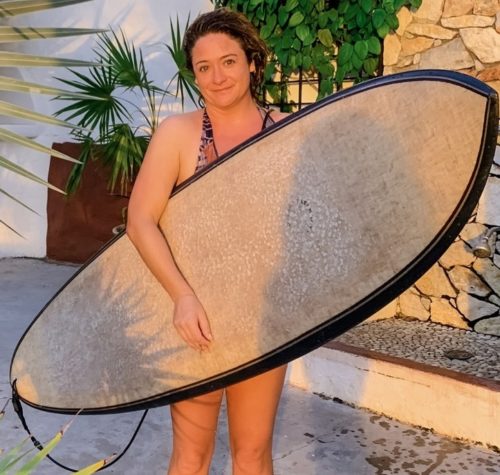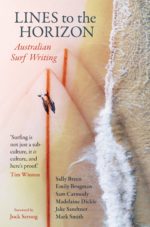Join us on the breaks of Exmouth, Anglesea and Surfers Paradise as three contributors introduce Fremantle Press’s new anthology of Australian surf writing

Young-adult writer Mark Smith says Lines to the Horizon: Australian Surf Writing will appeal as much to non-surfers as surfers. Mark is one of six writers featured in Fremantle Press’s new collection of narrative non-fiction pieces, a book that covers thousands of kilometres of coastline and delves into the deep, reverential relationship many Australians have with the ocean.
Mark says, ‘The archetypal white Australian character as depicted through history has always been linked to the interior, to explorers and the bush. And yet the majority of Australians are coastal-dwelling people. Writing about surf culture is important because it separates the reality from the myths – it shines a light on the role the beach and surfing have played in the development of our cities and towns, and the people who have populated them.’
Mark, who lives in Anglesea, says Victoria’s Surf Coast has some classic breaks: Bells, Winki, Rincon. ‘But my favourite is a point break further west where the forest comes right down to the shoreline. It’s a classic right-hander when the swell direction, wind and tide are all in sync. I can sit out the back between sets and watch black cockatoos flying in formation above the tree line or ponder a wedgetail eagle soaring on the thermals.’
Co-contributor Madelaine Dickie says to get to her local break on Western Australia’s Ningaloo Coast near Exmouth, you have to tiptoe across a rock platform starred with white sea urchins. She says, ‘In summer it’s great for longboarding; in winter, when the Indian flares to life with the same long-period swells that slam Indo, the twinnies and shortboards come out.’
Madelaine says in her work she’s interested in teasing out the uglier, darker aspects of Australian surf culture, aspects that become even more apparent when Australians surf overseas: ‘Things like our sense of entitlement, ownership, aggression, our insistence on etiquette and our disregard for etiquette.’ Madelaine says, ‘Surfing is at once an addiction, a subversive subculture, a deeply personal and spiritual pursuit, and a multi-billion-dollar industry. I think what’s so exciting about Lines to the Horizon is that each story is incandescent in its own way; each story throws a really unique light and heat on a different aspect of surfing.’
Sally Breen says her local break, where she watches surfers of all different degrees, is wild, long, wind-bitten and full of tourists. Sally says she sees ‘endless rescues in crazy rips by overworked Surfers Paradise surf lifesavers, humpback whales in season and dolphins, despite the nets’.
Sally, who describes herself as a boogie-boarder rather than a surfer, says she wanted to write an outsider’s perspective from the point of view of surfing, but an insider’s perspective from the point of view of the Gold Coast, a city she loves and one which is imbued with surf culture. Sally says, ‘I wanted to also highlight how women in surfing have been marginalised in the past and to try and understand why … Surfing is a rare, multifaceted cultural beast – physical, spiritual, public, personal. A professional and amateur sport, a big business, a set of subcultures, an identity and a cultural undertaking that’s full of diverse stories and historically rich. In that way it’s a fascinating topic.’
Sally Breen, Madelaine Dickie and Mark Smith are contributors to the book Lines to the Horizon: Australian Surf Writing. Also featured are Emily Brugman, Sam Carmody and Jake Sandtner. The book has a foreword by Jock Serong, and is available now in all good bookstores and online.



